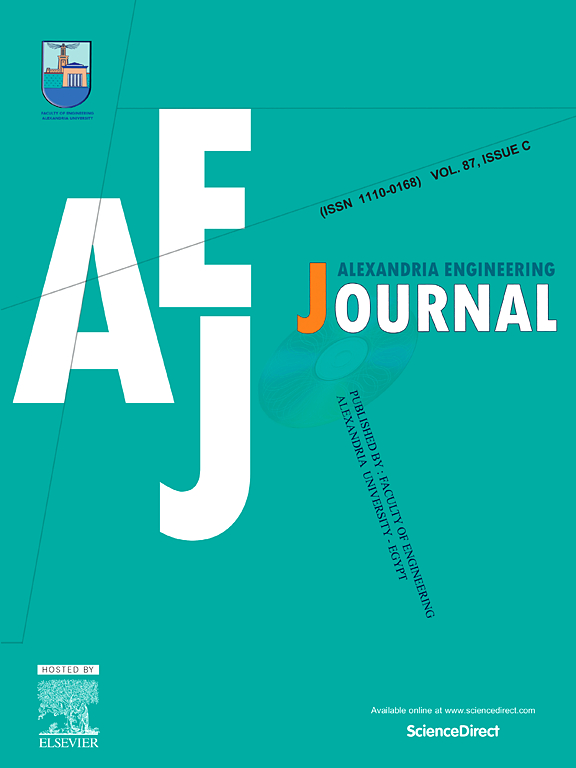Rheological behavior of two immiscible hybrid nanofluids with modified thermal conductivity models through a heated curved pipe
IF 6.2
2区 工程技术
Q1 ENGINEERING, MULTIDISCIPLINARY
引用次数: 0
Abstract
The immiscible fluids can help design more efficient systems for drug delivery and understanding the blood flow through diseased arteries. It can also have implications for the design of flow control devices or medical implants that involve curved geometries. Therefore, the current article scrutinizes the characteristics of heat transfer on the flow of two immiscible hybrid nanofluids and Newtonian fluids through a curved pipe induced due to a pressure gradient in an axial direction. Hybrid nanofluids are formulated by combining single-walled carbon nanotubes (SWCNTs) and multi-walled carbon nanotubes (MWCNTs) as nanoparticles, with water serving as the base fluid. The pipe is divided into two separate regions: (i) Region I (core), which is filled with a Newtonian fluid, and (ii) Region II (periphery), containing water as the base fluid mixed with hybrid nanofluids composed of both single-walled carbon nanotubes (SWCNTs) and multi-walled carbon nanotubes (MWCNTs). Mathematical modeling was developed by modifying the Navier-Stokes equations and simplifying the complex problem using non-dimensional parameters. Nonlinear coupled differential equations were analyzed with suitable assumptions and the perturbation technique to gain analytical solutions. The energy equation also incorporates the effects of viscous dissipation and thermal radiation. Graphical representations highlight the effects of critical parameters, such as Prandtl number, Reynolds number, Eckert number, curvature, viscosity and density ratios, thermal radiation, and the thermal conductivity parameter. Additionally, streamlines for variations in the velocity parameters and isotherms of the temperature parameter are presented. The shear stress and volumetric flow rate are also provided to assess the impact of numerous parameters. The results show that the axial velocity profile demonstrates a notable shift from the core region to the peripheral region, especially when the curvature ratio and Reynolds number are higher. As the viscosity ratio increases, the axial velocity of the immiscible fluid flow also increases. Conversely, the temperature of the fluid decreases as the conductivity ratio parameter rises. Furthermore, a comparison of temperature profiles reveals that the Yamada-Ota model predicts higher temperatures than the Xue model.
求助全文
约1分钟内获得全文
求助全文
来源期刊

alexandria engineering journal
Engineering-General Engineering
CiteScore
11.20
自引率
4.40%
发文量
1015
审稿时长
43 days
期刊介绍:
Alexandria Engineering Journal is an international journal devoted to publishing high quality papers in the field of engineering and applied science. Alexandria Engineering Journal is cited in the Engineering Information Services (EIS) and the Chemical Abstracts (CA). The papers published in Alexandria Engineering Journal are grouped into five sections, according to the following classification:
• Mechanical, Production, Marine and Textile Engineering
• Electrical Engineering, Computer Science and Nuclear Engineering
• Civil and Architecture Engineering
• Chemical Engineering and Applied Sciences
• Environmental Engineering
 求助内容:
求助内容: 应助结果提醒方式:
应助结果提醒方式:


